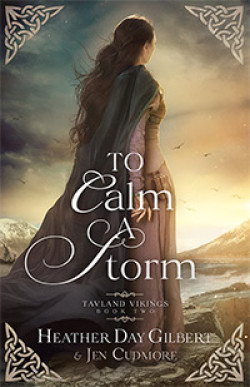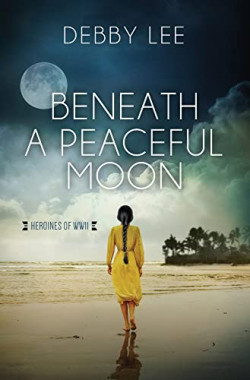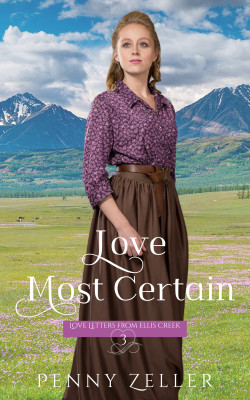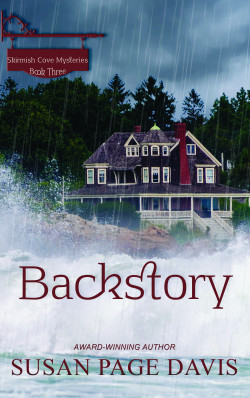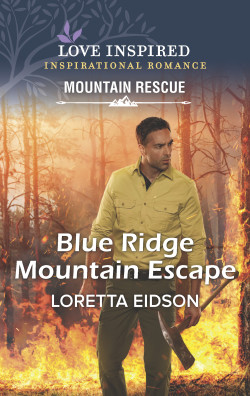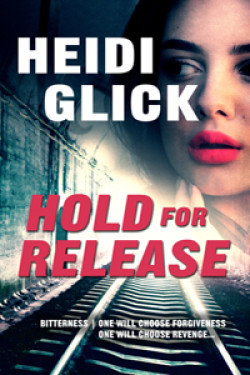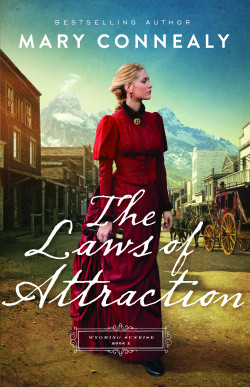Talkshow Thursday:
Welcome Back Lorri Dudley!
Grab a cup of your favorite beverage, draw up a chair, and listen in as Lorri Dudley shares about her latest release, Revealing the Truth.
What was your inspiration for the story?
Revealing the Truth was inspired by a scene I wrote in middle school where the hero crawled in the bedroom window. My mom sent me some of my old notebooks she didn’t want to throw away. In one, I found the scene which sparked my novel’s idea. Kudos to my mom for hanging on to all my childhood writings and projects until I was grown and had children who are now my age when I wrote them. Moms are the best!
What sort of research did you do for your story, and was there an exceptionally interesting tidbit you knew you had to include?
Researching a spy series was tricky. I’ve always been a fan of James Bond and the 007 movies, but MI6, as Britain’s secret service, wasn’t formed until 1912. Before that time, little information on spying was accounted for. In her book Regency Spies, Sue Wilkes says, “The idea of state-employed spies and informers affronted the British sense of fair play. Spying on one’s friends and neighbors was something the French did—it was thoroughly un-English.” However, there is evidence of the use of spies during the Regency Era, but one must dig deep for it. The British War Department opened a Foreign Letter Office, which later became the Alien Office and was the unofficial headquarters for intelligence. Most records from the Alien Office have disappeared, which could be because the agents of the Alien Office were very good at their jobs, but it made researching British spies challenging.
On the other hand, horse stealing was one of the most predominant crimes in southeast England. The offense warranted capital punishment—a public hanging. The temptation to steal a horse was in the significant payoff, equivalent to roughly two and a half months’ pay. I found it particularly interesting that horse thieves were seldom female because it would arouse too many questions when she attempted to sell the horse. One, because women rarely owned horses, and two, because it was feared she would attempt to sell it without her husband’s permission, and he’d come to take his horse back.
How are your characters like you? Different?
Katherine and I share many of the same firstborn traits. We desire to nurture people but also feel responsible—like we have to be perfect and have it all together, which makes it a struggle to ask for help. When my second child was born, my parents came up to assist me, but they got the stomach bug. My firstborn didn’t like sharing mom’s attention, and the baby had colic and wasn’t sleeping, so neither was I. A friend stopped by, saw my face, and took the baby for a walk. When she returned, she started folding my laundry. I cried. I didn’t know how much I needed help until she swooped in like a Godsend.
If your book is part of a series: Did you set out to write a series? Why did you decide to write a series?
I did set out to write a series. Both my publisher, Misty Beller with Wild Heart Books, and I think that if book one is done well, readers will be invested in the whole series. It’s fun to see characters that become like old friends pop up in other books. In this series, Agents of Espionage, the common thread is Agent Scar, the man in black in Revealing the Truth and the hero of Reclaiming the Spy, book two. He’s the spies’ handler and appears in all four books. In Reclaiming the Spy, there’s even a tie-in with a comical side character from book two and book five of my prior Leeward Island Series.
How has your book changed since your first draft?
In my first draft, Katherine flees the villain, and the hero, Stephen, tracks her to London, but that’swhere the clues grow cold. London is a large city with areas of deplorable squalor, rookeries, and flash houses, and he’s beside himself because she’s a lone woman out there somewhere. Initially, I had Katherine mistaken as Stephen’s fiancée by his servants which afforded her refuge in his London bachelor’s lodgings. But once Stephen arrived, it wasn’t believable that Katherine could have won over his servants enough to keep a secret from their employer. So, even though it made for a tense scene of inner conflict, with Stephen grateful to locate her but angry that she’d lied, I got creative and changed things up.
If you were to write a spin-off book about one of your secondary characters, which one would you choose and why?
I’ve been dying to write Claire’s story. Claire is Katherine’s sister, whom Katherine tries to protect from the villain in Revealing the Truth by keeping Claire’s location (at a boarding school) a secret. Claire is a self-assured, go-getter type whose interactions with Madame Lamoureux, her boarding school’s headmistress, are a riot. I have a general plot of her story written, but it has a reality-TV show Apprentice-like feel with an entrepreneurial race for an inheritance. It lacks any spy element, so it’s not meant to be in this series, but perhaps the next or a stand-alone.
How do you come up with storylines?
The initial inspiration comes from daydreaming, which typically becomes an inciting incident or cute meet. The rest of the plot forms while I’m researching the era, setting or delving deeper into the character’s personality using Angela Ackerman and Becca Puglisi’s The Positive Trait Thesaurus or Susan May Warren’s The Story Equation.
Revealing the Truth was inspired by a scene I wrote in middle school where the hero crawled in the bedroom window. My mom sent me some of my old notebooks she didn’t want to throw away. In one, I found the scene which sparked my novel’s idea. Kudos to my mom for hanging on to all my childhood writings and projects until I was grown and had children who are now my age when I wrote them. Moms are the best!
What sort of research did you do for your story, and was there an exceptionally interesting tidbit you knew you had to include?
Researching a spy series was tricky. I’ve always been a fan of James Bond and the 007 movies, but MI6, as Britain’s secret service, wasn’t formed until 1912. Before that time, little information on spying was accounted for. In her book Regency Spies, Sue Wilkes says, “The idea of state-employed spies and informers affronted the British sense of fair play. Spying on one’s friends and neighbors was something the French did—it was thoroughly un-English.” However, there is evidence of the use of spies during the Regency Era, but one must dig deep for it. The British War Department opened a Foreign Letter Office, which later became the Alien Office and was the unofficial headquarters for intelligence. Most records from the Alien Office have disappeared, which could be because the agents of the Alien Office were very good at their jobs, but it made researching British spies challenging.
On the other hand, horse stealing was one of the most predominant crimes in southeast England. The offense warranted capital punishment—a public hanging. The temptation to steal a horse was in the significant payoff, equivalent to roughly two and a half months’ pay. I found it particularly interesting that horse thieves were seldom female because it would arouse too many questions when she attempted to sell the horse. One, because women rarely owned horses, and two, because it was feared she would attempt to sell it without her husband’s permission, and he’d come to take his horse back.
How are your characters like you? Different?
Katherine and I share many of the same firstborn traits. We desire to nurture people but also feel responsible—like we have to be perfect and have it all together, which makes it a struggle to ask for help. When my second child was born, my parents came up to assist me, but they got the stomach bug. My firstborn didn’t like sharing mom’s attention, and the baby had colic and wasn’t sleeping, so neither was I. A friend stopped by, saw my face, and took the baby for a walk. When she returned, she started folding my laundry. I cried. I didn’t know how much I needed help until she swooped in like a Godsend.
If your book is part of a series: Did you set out to write a series? Why did you decide to write a series?
I did set out to write a series. Both my publisher, Misty Beller with Wild Heart Books, and I think that if book one is done well, readers will be invested in the whole series. It’s fun to see characters that become like old friends pop up in other books. In this series, Agents of Espionage, the common thread is Agent Scar, the man in black in Revealing the Truth and the hero of Reclaiming the Spy, book two. He’s the spies’ handler and appears in all four books. In Reclaiming the Spy, there’s even a tie-in with a comical side character from book two and book five of my prior Leeward Island Series.
How has your book changed since your first draft?
In my first draft, Katherine flees the villain, and the hero, Stephen, tracks her to London, but that’swhere the clues grow cold. London is a large city with areas of deplorable squalor, rookeries, and flash houses, and he’s beside himself because she’s a lone woman out there somewhere. Initially, I had Katherine mistaken as Stephen’s fiancée by his servants which afforded her refuge in his London bachelor’s lodgings. But once Stephen arrived, it wasn’t believable that Katherine could have won over his servants enough to keep a secret from their employer. So, even though it made for a tense scene of inner conflict, with Stephen grateful to locate her but angry that she’d lied, I got creative and changed things up.
If you were to write a spin-off book about one of your secondary characters, which one would you choose and why?
I’ve been dying to write Claire’s story. Claire is Katherine’s sister, whom Katherine tries to protect from the villain in Revealing the Truth by keeping Claire’s location (at a boarding school) a secret. Claire is a self-assured, go-getter type whose interactions with Madame Lamoureux, her boarding school’s headmistress, are a riot. I have a general plot of her story written, but it has a reality-TV show Apprentice-like feel with an entrepreneurial race for an inheritance. It lacks any spy element, so it’s not meant to be in this series, but perhaps the next or a stand-alone.
How do you come up with storylines?
The initial inspiration comes from daydreaming, which typically becomes an inciting incident or cute meet. The rest of the plot forms while I’m researching the era, setting or delving deeper into the character’s personality using Angela Ackerman and Becca Puglisi’s The Positive Trait Thesaurus or Susan May Warren’s The Story Equation.
What books are on your nightstand right now?
I usually have multiple books going simultaneously, leaving them everywhere around the house. In my living room are the books I’m reading for fun—When Tomorrow Came by Hannah Linder and The Debutante’s Code by Erica Vetsch. In my car, where I spend a lot of time waiting to pick up boys from sports practices, I have The House of Mirth by Edith Wharton (since I’m writing a Gilded Age novella for Wild Heart Books). Piled in my office are my research books, The 19th Century Underworld, Crime, Controversy and Corruption by Stephen Carver and Jane Austen and Crime by Susannah Fullerton. Last but not least, I have my small group’s study of Fresh Air by Chris Hodges on my nightstand.
What is your next project?
Book two, Reclaiming the Spy, with Agent Scar and Stephen’s sister Abby as the hero and heroine, has already undergone rounds of edits and will release on August 29, 2023. I’m seventy-five percent done with writing book three, Redeeming the Rake, which involves highwaymen and jewel thieves, and book four, Relinquishing the Agent, is in the plotting stages and will have the hero solving crimes of resurrection men—grave-digging body snatchers who sell bodies for science dissection.
I usually have multiple books going simultaneously, leaving them everywhere around the house. In my living room are the books I’m reading for fun—When Tomorrow Came by Hannah Linder and The Debutante’s Code by Erica Vetsch. In my car, where I spend a lot of time waiting to pick up boys from sports practices, I have The House of Mirth by Edith Wharton (since I’m writing a Gilded Age novella for Wild Heart Books). Piled in my office are my research books, The 19th Century Underworld, Crime, Controversy and Corruption by Stephen Carver and Jane Austen and Crime by Susannah Fullerton. Last but not least, I have my small group’s study of Fresh Air by Chris Hodges on my nightstand.
What is your next project?
Book two, Reclaiming the Spy, with Agent Scar and Stephen’s sister Abby as the hero and heroine, has already undergone rounds of edits and will release on August 29, 2023. I’m seventy-five percent done with writing book three, Redeeming the Rake, which involves highwaymen and jewel thieves, and book four, Relinquishing the Agent, is in the plotting stages and will have the hero solving crimes of resurrection men—grave-digging body snatchers who sell bodies for science dissection.
Doesn't this series sound intriguing? Grab book one: https://books2read.com/u/47WLD8



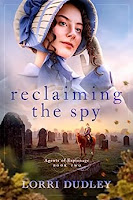




.jpg)





















